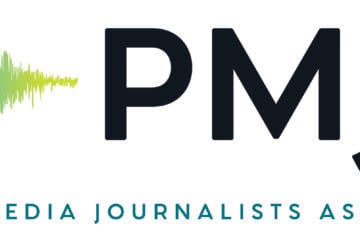Drive for diversity demands courage, commitment

Tovares (Photo: Francisco Suárez Bravo)
When the Corporation for Public Broadcasting appointed me chief content officer earlier this year, the fact that the position went to a Latino didn’t get much attention. That’s because inside CPB, diversity in leadership is not that big of a deal. The lack of overt significance of my race and ethnicity signaled how far CPB has progressed in building a mature culture of diversity and inclusion.
CPB’s transformation resulted from a multiyear commitment by its board and top executives. In 2009 when President Pat Harrison and Board Chair Ernest Wilson publicly committed to diversity as an organizational priority within the framework of the three Ds — Digital, Diversity and Dialogue — all of CPB followed. There is a lesson here for public media stations, institutions and their boards. More about that later.
Seven years later CPB’s commitment to inclusion is evident across our executive team. Our chief of staff is a Latina. The vice presidents who oversee our radio division and diversity and television content division are African-American women, as was our former senior v.p. of television and digital video content, who retired in May. As CPB’s leadership becomes more diverse, we expand CPB’s networks and, in turn, expand the circle of talent that CPB accesses.
I can also point to many successes in CPB’s grant programs since we first embraced the three Ds. CPB’s Diversity and Innovation Fund, which I previously managed, has awarded more than $43.3 million to support primetime and children’s content, including millions to the National Minority Consortia above their base funding. Transformational projects in radio include NPR’s Code Switch project on race, identity and culture, and the One Nation Media Project that expanded the multicultural audience of KPCC in Los Angeles.
 To invest in professional development for the editorial leaders and producers of tomorrow, CPB funded the Next Generation Leadership project and the Firelight Documentary Lab. CPB support of the Independent Television Service provides funding to a diverse group of leading producers — men and women from different areas of the country.
To invest in professional development for the editorial leaders and producers of tomorrow, CPB funded the Next Generation Leadership project and the Firelight Documentary Lab. CPB support of the Independent Television Service provides funding to a diverse group of leading producers — men and women from different areas of the country.
These projects expand public media’s reach into traditionally underrepresented communities and also allow us to address gender issues, cross geographic boundaries and bring new points of view to public media productions.
CPB’s work to drive change within public media has not been easy. My colleagues and I have had many awkward conversations with potential grantees about staffing, content themes and intended audiences. We posed tough questions to national producing stations about the need to expand the pool of producing talent. We challenged national organizations on the importance of diversity in staffing and the need to attract new audiences.
As everyone working in public media leadership knows, shifting resources to new projects or emerging talent often means there’s less to invest in legacy projects and producers. CPB cannot proceed in its grant-making as though the demographics of our country are not changing. To do so would not only be irresponsible; it would be a failure in CPB’s charge as a federally funded national organization to serve all Americans.
This brings me back to the importance of leadership. Driving change is not easy. Those who are working to advance diversity within stations and national institutions need support from their leadership. Until top executives and board members at more public media organizations adopt and commit to similar goals, the system will falter in its efforts to represent and reflect the diversity of the American public.
CPB survey data from licensees that receive Community Service Grants show that leadership at the station level remains largely white and male. Minorities account for only about one in five station leaders, board members and program decision makers. Those figures have been generally static for years. Among NPR and PBS member stations, representation of Latinos, African-Americans, Asian-Americans and Native Americans at the general manager level is almost nonexistent. And women are still underrepresented among stations’ top managers.
Though audiences for our children’s programs are racially and ethnically diverse, the homogeneity of attendees at the yearly PBS Kids Producers Summit tells a different story about diversity of editorial leadership in the children’s space.
We also need to acknowledge that most of PBS’s primetime television content is produced or presented by a handful of stations. Station producing capacity outside of the east coast is limited. Emerging platforms and changes in media consumption do offer opportunities to improve on this. We need to make sure more stations, with diverse in-house and independent producers, can develop the capacity needed to take part in content production and distribution in the digital age.
When I first began as CPB’s senior v.p. of diversity and innovation in May 2010, I decided that the best argument to advance diversity in the system was the “diversity as a business imperative” model. That remains a great and pragmatic argument. But six years later I now also see diversity as a moral imperative — it is simply the right thing to do. I consider it part of my personal duty to repair the world, and I think many of my public media colleagues share this commitment. This is about more than just the bottom line.
Back in 2009 CPB’s leadership recognized that real change would take time and that we could not do it alone. Today there is a meaningful partnership of system leaders committed to creating a more inclusive public media system. KQED in San Francisco, NPR, Oregon Public Broadcasting, WGBH in Boston and WNYC in New York City are each hosting fellows from the Next Generation Leadership project.
KPCC, through its One Nation demonstration project, has shown the gains that come from diversifying talent and content. With the World Channel, WGBH has given independent producers of color a successful platform to reach new audiences. In spite of the challenges public media face in representing America in all of its diversity, the system does have more than a few good stories to tell.
Each of these stories of success, including our own at CPB, shares a common thread: The efforts were driven from leadership at the top. At CPB we knew our CEO, and our board chairs over the years had our backs. That is the lesson from CPB’s experience: Diversity is driven by leadership with the courage to make it an ongoing priority.
Joseph Tovares is senior v.p. and chief content officer for CPB. He is an award-winning producer and public media veteran who previously worked at Kentucky Educational Television; Texas stations KLRU, Austin, and KLRN, San Antonio; and WGBH.







